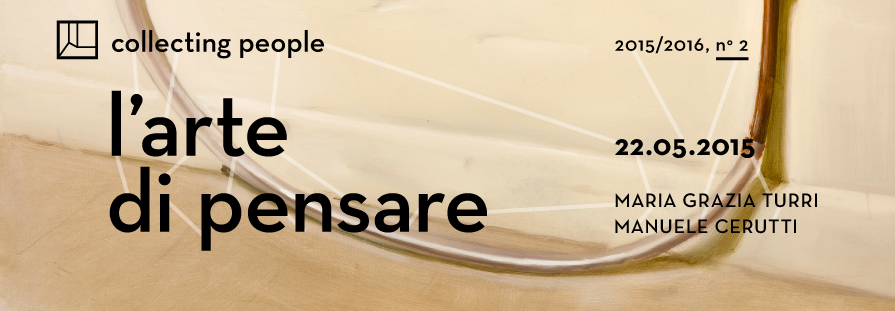collecting people / the art of thinking
The object: the undisputed protagonist of the everyday
A conversation between Maria Grazia Turri, Manuele Cerutti and Clara Madaro.
Maria Grazia Turri ‘s philosophical research and Manuele Cerutti ‘s artistic research intertwine to define a new status for everyday objects, such as beds, cups, and coffee pots, which we use automatically every day as natural extensions of our bodies. We often have an absent-minded relationship with objects, so that we reduce the significance of their role to that of just being instrumental. Well-known objects and new ones actually change our relationships, the way in which we give sense and meaning to our gestures, and our relationship with the material and immaterial world. Not even philosophy has paid enough attention to how the world of objects is central to our lives, in our experiences, and in view of making sense of where we find ourselves.
Contrarily, in Maria Grazia Turri’s reconstruction we are the product of relationships with objects, since “from simple items of ownership, these become the focal points of virtual actions: each of them is able to offer an affordance through which it is possible to have direct access both to the object and the conceptual understanding of that same object”, which allows us to understand how these shape us and change us. Moreover, they play a role that is far from irrelevant in the way we interact with objects whose emotional properties are expressed by the materials, shapes, colors, and not least, the context in which they are inserted.
In Manuele Cerutti’s pictorial research, objects seem to be long forgotten, left out of the social circuit of use for some time, and devoid of their original function. Paradoxically, this lack of function provides them with a very strong individuality. They undertake real ‘actions’, in which the play of elemental forces invoked (pressure, tension, gravity) produces effects of actual tonic immobility. Each of these actions seems to belong to a repertoire that proposes the same elements again with greater confidence each time. Therefore, it is a use of objects that is not only contemplative, but which allows for projecting and even identifying ideas, freed from any references to a daily function.

